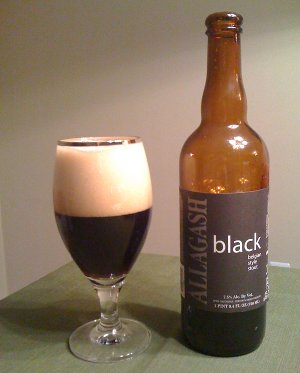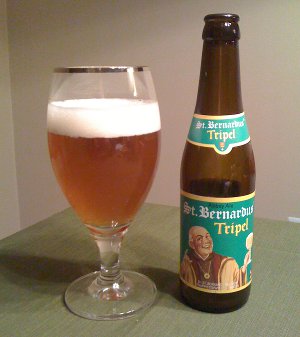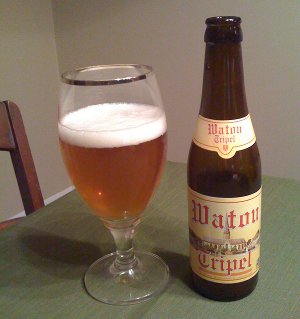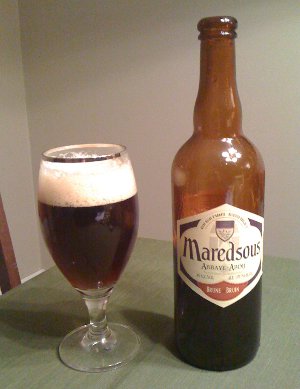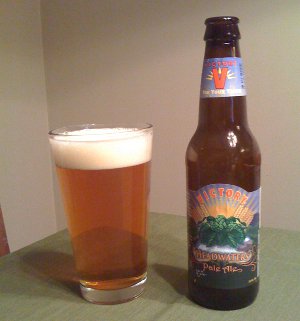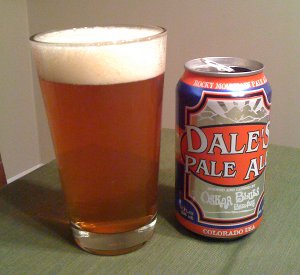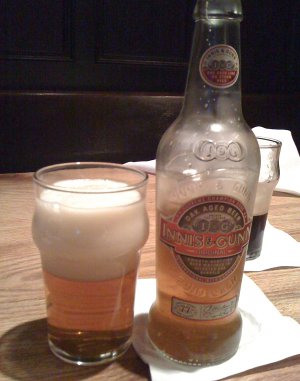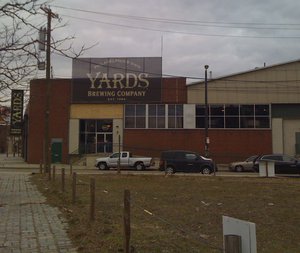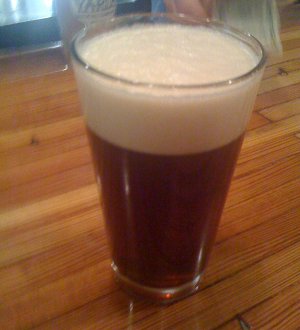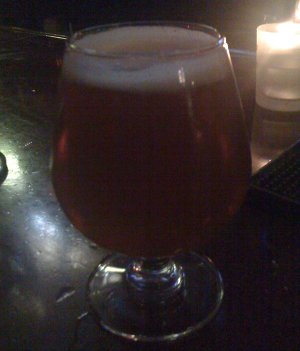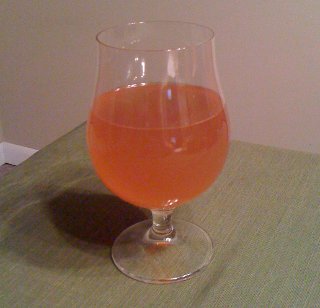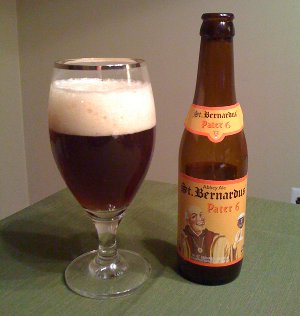1. EXT. GREEK RUINS
MARK and a HYPOTHETICAL READER enjoy a few beers whilst discussing the latest Session, about “Regular Beer”. They are clothed in flowing white sheets, surrounded by stone pillars.
HYPOTHETICAL READER: So what’s this shit all about?
MARK: On the first Friday of every month, beer nerds blog about a pre-defined topic. This month, it’s about Regular Beer.
HYPOTHETICAL READER: What the fuck does “Regular Beer” mean?
MARK: That’s an excellent question. I have no idea.
BENJAMIN FRANKLIN: I suggest a Socratic dialogue!
HYPOTHETICAL READER: Why the fuck is Ben Franklin here?
MARK: We go way back. Besides, given that I get an average of about 2 visitors a day, he’s just as likely to be here as you. Also, we’re in Greece. Why would you be surprised by anyone.
HYPOTHETICAL READER: You’re drunk, aren’t you.
MARK: Define drunk.
HYPOTHETICAL READER glares at MARK.
MARK: Ok, fine, I’m mildly drunk.
HYPOTHETICAL READER: Did you get drunk on regular beer?
MARK: No. No, I don’t think I have. Unless you consider Allagash Black to be a regular beer.
HYPOTHETICAL READER: And why isn’t Allagash Black a “regular beer”?
MARK: It’s made with crazy amounts of ingredients, from the normal malted barley, to wheat and even oatmeal. It’s also a mixture of established styles, becoming something that doesn’t really fit in any one style. It’s not especially common to find it at a restaurant or bar (around here, at least). It’s not hugely alcoholic, but it’s stronger than your typical macro. It also costs more than most beers.
HYPOTHETICAL READER: This implies that you are a “cheapskate”.
MARK: … Yes, I suppose, then, that price has something to do with whether or not a beer is “regular”.
HYPOTHETICAL READER: That, or you’re just a penny-pinching douche.
MARK: Well, the announcement for this session says that the SPE should probably be less than $25, and Allagash Black is slightly more than that.
HYPOTHETICAL READER: We’re not making much headway here.
MARK: Yeah, you suck at the Socratic method.
SAM CALAGIONE: I make off-centered ales for off-centered people.
HYPOTHETICAL READER: I’m not even going to ask.
MARK: But he brings up a good point. “Regular” beer probably has a broad appeal.
SAM CALAGIONE: I make off-centered ales for off-centered people!
BENJAMIN FRANKLIN: Yes, Sam, I think we’ve already established that. Jesus, it’s a sausage fest in here. Where are all the low-women?
HYPOTHETICAL READER: We’re having a quasi-philosophical discussion in Greece, Ben. Perhaps you can find a young boy? Also, how do you know I’m not a woman?
MARK: Because this is a beer blog. Written by me. Given the nature of the internet, it’s somewhat likely that you’re not even human, let alone a woman.
HYPOTHETICAL READER: You caught me. I am, in fact, a google spider that has attained self-consciousness. Tell me, what constitutes “broad appeal”?
MARK: I suppose something that appeals to as wide an audience as possible. Things that don’t require a refined palate or acquired tastes. I’d imagine that stuff like IPAs are not particularly “regular”, since most folks don’t especially like the bitterness involved.
HYPOTHETICAL READER: Ok, enough with the pissing around. Out with it! What’s the last beer you’ve had that you’d consider a “regular” beer?
MARK: Hmmm…. A lager. Definitely a lager.
BENJAMIN FRANKLIN: That’s a style, not a specific beer!
MARK: Not in Pennsylvania. Here, if you ask for a “lager”, you get a Yuengling Traditional Lager.
HYPOTHETICAL READER: And what makes it a good regular beer?
MARK: Well, it’s cheap. It’s ubiquitous in this area (hence the usurption of the word “lager”). It’s a big step above the typical macro breweries in terms of taste and quality, yet it’s not particularly intense or interesting. Everyone drinks it, and everyone likes it. Even the crappiest sports bar carries it. It’s generally something you can count on. In these parts, at least.
HYPOTHETICAL READER: I’m pretty sure “usurption” isn’t a real word.
MARK: Probably not, but I think you know what I meant.
HYPOTHETICAL READER: But isn’t Yuengling rare in other parts of the country?
MARK: This raises another interesting point. It’s only “regular” because it’s really taken over this market. I imagine there are places where Yuengling is more of a delicacy. I also imagine that something like Allagash Black is probably not quite so expensive of rare in Maine. Perhaps someone there thinks of Allagash as a “regular” brewery.
HYPOTHETICAL READER: That would be nice.
MARK: Indeed.
HYPOTHETICAL READER: So, to sum up, regular beer is cheap, but tasty. It’s appealing to a broad audience. It’s widely available, but may only be so in a particular region. Do macro beers count?
MARK: Probably. They’re cheap, they’re inoffensive, and they’re widely available. The tend to get a bad rap because they’re so ubiquitous and boring, but they’re not bad for what they are. I could certainly make do with a bottle of Miller lite.
HYPOTHETICAL READER: Blasphemy!
MARK: Nonsense. They’re “regular”, which is to say, there’s nothing special about them. From what I’ve seen of people’s responses to this session, many people have been choosing a beer that is exceptional, but which they regularly consume. This is certainly one way to answer the question, which was extremely open-ended and which could support many interpretations.
HYPOTHETICAL READER: But your interpretation is that “regular” means “boring”.
MARK: Not necessarily. Though most boring beers are certainly regular, not all regular beers are boring.
HYPOTHETICAL READER: More examples are needed here.
MARK: Another local option would be Kenzinger. It’s not quite as common as the Macros or Yuengling, but it’s a great session beer that shares certain qualities. Cheapy, tasty, inoffensive, and you can probably find it in this area a lot. I know I said that IPAs are probably off-limits for most regular folks, but something like a Sierra Nevada Pale Ale would also probably work. The most common Sam Adams beers would probably also qualify. Maybe Fat Tire? It seems like a slightly more upscale Yuengling, but for the West Coast.
HYPOTHETICAL READER: Is it me, or has this post really trailed off?
MARK: I think I’m sobering up.
HYPOTHETICAL READER: That explains it. Any closing thoughts?
SAM CALAGIONE: I make off-centered ales for off-centered people!
BENJAMIN FRANKLIN (Ignoring Sam): Beer is proof that God loves us and wants us to be happy.
MARK: Well, I think that just about covers it. Regular beer, extraordinary beer, it doesn’t really matter, so long as you’re enjoying yourself.
HYPOTHETICAL READER: Amen.
SAM CALAGIONE: I make off-centered ales for off-centered people!
MARK: *sigh*
HYPOTHETICAL READER (in unison): *sigh*
BENJAMIN FRANKLIN (in unison): *sigh*
SAM CALAGIONE: I make off-centered ales for off-centered people?
1. INT. COMPUTER DESK, EVENING
MARK: Yeah, so this wasn’t nearly as insightful as I had planned. The concept of a “regular beer” is still extremely fuzzy to me. Perhaps the best way to describe it could be drawn from Supreme Court Justice Potter Stewart: “I know it when I see it.” The craft beer and beer geek worlds often explore the extreme depths of what is possible, and there are lots of folks that enjoy the interesting results. But at the same time, maybe we just want a beer to suck down with dinner. Sometimes I want to drink a beer that wont get me drunk after just 12 ounces. Sometimes I want to drink a beer that won’t obliterate my palate, the way some pale ales are wont to do. I always find it interesting when a brewery known for its extreme beers puts out a more approachable beer. For instance, Victory brewing recently launched a new beer in celebration of its fifteenth anniversary. You’d expect it to be a Russian Imperial Stout or maybe a Double IPA, or perhaps something along the lines of a Strong Belgian Ale (like V-Twelve or even Golden Monkey). But no, instead, they’re releasing Headwaters Pale Ale. Coming in at a svelte 5.1% ABV, it’s certainly not a big beer. Indeed, reading about the beer indicates that the beer is a tribute to… water. The most regular of ingredients in all of beer! I have not had one of these new beers just yet, but I’m greatly looking forward to the experience, even if it’s not something extreme or mind-blowing. I’m sure I’ll enjoy it nonetheless.
